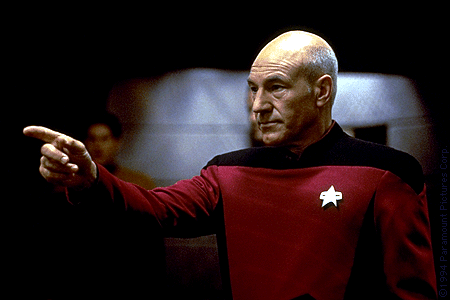
“Engage!” from like-titled blog post on SS Glim
An article in EduTopia’s August 26 newsletter reminded me of a conversation I had the other evening with Doug Peterson, in Windsor. The article is How to Keep Kids Engaged in Class, and it describes ten tips to increase class participation. Examples include:
- Start Class with a mind warm-up,
- Use movement to get kids focused,
- Run a tight ship when giving instructions,
Sounds rather dry, but the explanations are certainly worth your reading.
What caught my attention was the word, engage. It’s a good word, hard edged with both guttural and the pleasant sibilant consonant sounds of G. It’s an action word that implies energy, yet it is broad enough to be used as often and in as many contexts as needed.
Jean Luc Picard used the word in every episode of Star Trek (NG) — so it’s got to be a great word.
But in education-speak, it has always bothered me, to the point that I try to avoid it. There are so many terms that we use that simply do not paint pictures.
It occurred to me the other night with Doug, over his Steak and my Chicken Creole, that what bothers me about the word is who is usually doing it. Much of the time, and most of the time in the EduTopia article, it is the teacher who is trying to engage the students. Although it’s not a bad thing to do, and the suggestions in the article are quite good, I think that the most appropriate and efficient engagement in education is when the learner is doing it. The learner learns by engaging something — doing something to something and learning from what it does back.
This might be
- Reading a chapter in a textbook, answering questions, and receiving a grade — probably not the most efficient harnessing of engage energy.
- It might also be the learning that is done by interacting within a digital simulation and discovering concepts of physics by building an engine utilizing the energy of some virtual wind.
- It might be the math language learned by playing with wooden blocks and talking about why you are making these stacks to solve this problem.
- It might be the engagement involved in writing a blog entry, knowing that your classmates will be reading it and responding to it, or
- Interacting with a local writer via Skype, or
- Struggling with the plan for a presentation with two other students standing at the white board.
If, in our conversation, I am seeing student action, when I hear the word engage, then I believe that I am going to be thinking about learning — not the teaching.

Powered by ScribeFire.

I would expand this notion a bit, Dave. For me, learning comes first, then teaching. I am a learner to be a teacher. Thus ENGAGE is INTERACTION and implies MY learning along with the student’s learning. Everytime I teach, I learn.
So engage is not something we do TO students. It is something we do WITH students. Learning is two-way.
Maybe student INTER action is the key?
Learning should invoke curiosity. Once this occurs ‘student action’ will be the response.Curiosity ensures continuance and as stated in the previous comment learning is a two way process, therefore we learn as much form our students as they do from us.Our teaching then becomes informed by what we have learn’t from our students as much as by the curriculum and our own creativity.
actually, I think the engagement should happen between the student and the learning activity.
While it’s fine for the teacher to engage the student – what you really want, in my opinion, is for the student to engage with the learning activity.
You know… I’ve gotten really tired of “engagement.” I think it can trend toward what Postman warned us about in “Amusing Ourselves to Death.”
Education should be about empowerment, not engagement. That’s what I want to see us reclaim.
Au contraire! The mere desire to ENGAGE students is entirely about TEACHING. It’s a treatment model that one person is doing something to another in order to provoke a response, reaction or change in behavior.
We often speak of engagement when we attempt to get others to do that are against their inclinations or self-interest.
I’m pleased that other commenters shared similar sentiments.
You make a good point, Gary, that the teacher can and very often is the “something” that the learning is engaging with. It is a conversation, of sorts, where the ultimate outcome is known by the teacher, but by the student, it is not known until it happens — at the point of learning. That is not to say that outcomes can’t surprise the teacher as well.
I guess the part that makes me uneasy is when I hear educators say that we are integrating social networks or cell phones into our classrooms because it will engage the students. It’s where they are, so they will be more engaged.